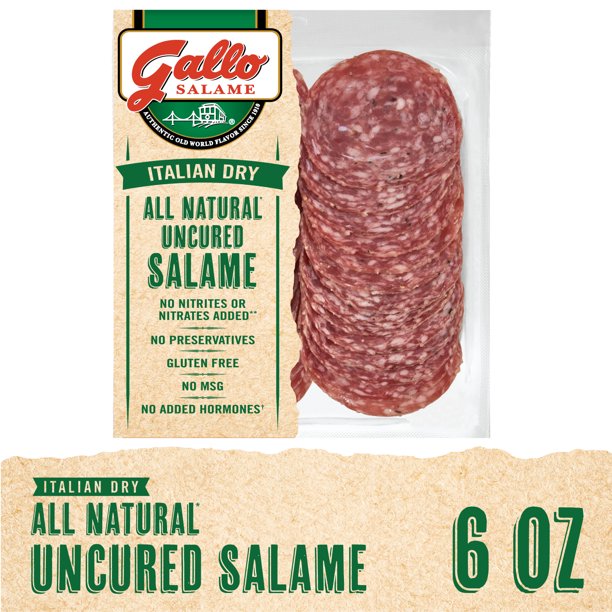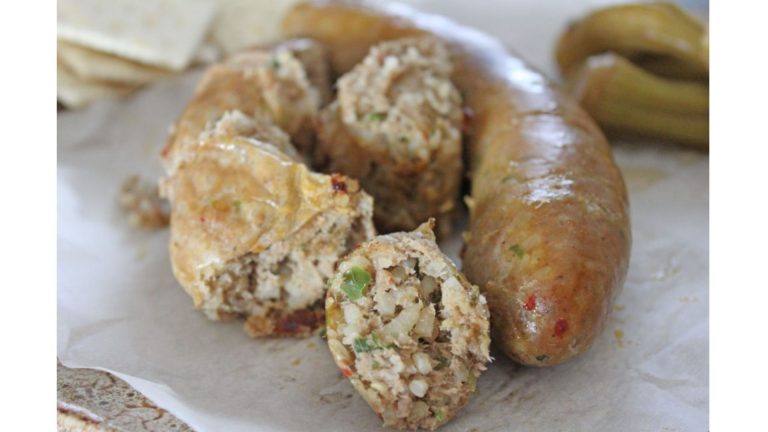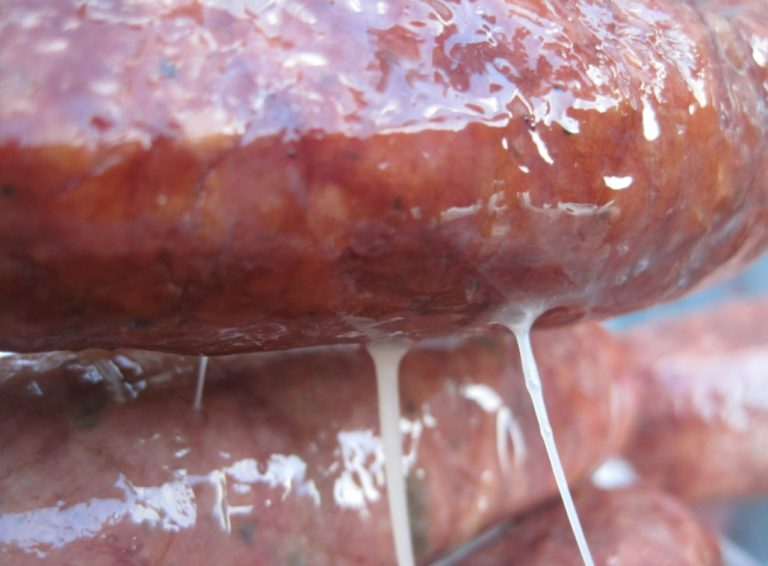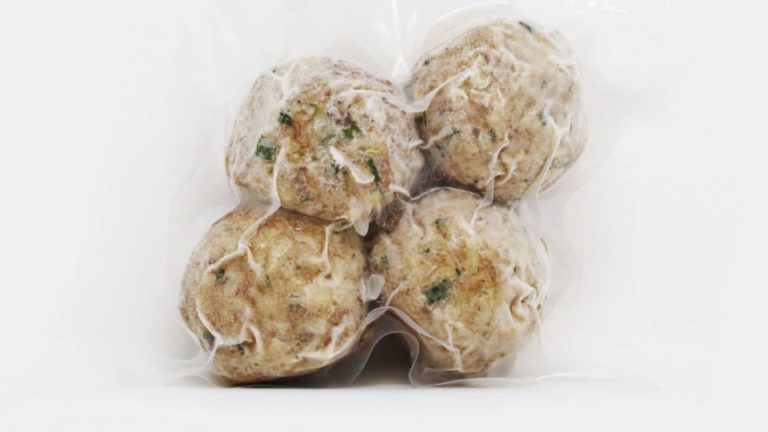What Is Meant By Uncured Salami?
Uncured salami can be found on the shelves of the local supermarkets.
Most people know that salami is supposed to be cured and that’s why the uncured part of the label may catch your attention.
So what is the meaning of uncured salami?
The word uncured refers to the fact that the salami has not been cured.
The process of curing meat consists of preserving it by smoking, drying, and salt-curing it.
The resulting salami is also referred to as uncured, unpreserved, unsmoked, or undried.
Contrary to popular belief, uncured salami is cured as well. There are agents of natural origin that treat uncured salami.
There is everything in the manufacturing process. How it is processed, the ingredients used, and shelf life are some of the things you can learn about uncured salami.
I will also recommend a few recipes with uncured salami.
Table of Contents
What Does it Mean When Salami is not cured?
It can be surprising to see uncured salami on store shelves since it is a type of cured pork sausage.
The word uncured is used to describe salami that does not contain nitrates or nitrites. However, this is not entirely true.
It is possible to make uncured salami with the use of celery juice, celery powder, and beetroot powder.
These ingredients turn into nitrates and nitrites, which preserve the meat. The difference between cured and uncured salami is not caused by the presence of preservatives.
It is the beginning of the preservatives. Cured and uncured salamis have different levels of chemical and natural preservatives.
According to USDA guidelines, meat should be labeled cured when it contains chemical preservatives.
Even though it is technically incorrect, the guidelines allow producers to mark products as uncured even though they are technically incorrect.
There are marketing practices for cured salami companies that can be misleading. The people who want to avoid processed meat might buy uncured salami.
Uncured salami often has higher amounts of salt, nitrates, and nitrites than its cured counterpart.

How Long Will Uncured Salami Last?
The addition of natural preservatives to uncured salami gives it the same properties as its cured counterpart.
The shelf life of uncured salami is much the same as the shelf life of cured salami. According to the USDA, dry sausages can be kept at room temperature for up to six weeks.
If you want to keep their flavor and texture, you can keep them in the fridge. Dry sausages can last indefinitely if they’re not opened.
You should put the dry sausages in the fridge once you open them. It is possible to keep them in the fridge for three weeks.
The guidelines for pre-cut uncured salami are slightly different if you have purchased it.
Pre-cut uncured salami can’t be kept as long because of the risk of the growth of bacteria when the meat is cut.
You can keep the package in the fridge for a couple of weeks if you haven’t opened it yet. You can keep it fresh for three to five days once you open it.
Some people claim that the shelf life of uncured salami is shorter because of the addition of natural preservatives.
Preservatives don’t keep the meat fresh as long as natural ones. Either way, always look for the expired dates on the package and keep your eyes open for any signs of decay.
A change in smell and texture may be an indicator that it has gone bad. The cured version of salami is darker in color than the uncured version.
You should discard it if you notice that it is becoming gray, brown, or black.

How to Eat Uncured Salami?
There are ingredients in uncured salami that keep it safe from harmful bacteria.
It is perfectly safe to consume uncured salami.
Since it contains natural preservative agents, uncured salami can be used in the same way as cured ones.
Salami is an excellent addition to your dishes, whether it is in sandwiches, pasta, pizza, or a part of a charcuterie board.
Some Recipe Ideas Using Salami
Do you need some salami inspiration? Check out the recipes.
Salami Carbonara
Ingredients
- ¼ cup of extra virgin olive oil
- ¾ lb. of quality salami, diced
- 1 ½ lb. bucatini
- Six egg yolks
- ½ cup of grated pecorino cheese
- Salt
- Pepper
Preparation
- Heat half of the oil in a large pan or a skillet.
- Add salami to the pan and cook it for up to 20 minutes. Make sure the fat is rendered and the salami becomes tender. Stir occasionally.
- Cook the bucatini in a large pot.
- Save the pasta water for about 1 1/2 cup.
- Now whisk the yolks with ½ the pecorino and the remaining olive oil.
- Add the bucatini and ½ cup of pasta water to the salami.
- Cook it for about two minutes.
- Remove the pan from the heat and add the yolk mixture and the remaining 1 cup of pasta water.
- Mix well until it becomes creamy.
- Add salt and pepper for taste.
- Sprinkle it with grated cheese for an added flavor.
Salami and Scrambled Eggs
Ingredients
- ¼ canola oil
- One thinly sliced onion
- 10 oz. of uncured salami cut into strips.
- Four cups of baby arugula or watercress
- A dozen eggs
- Salt
- Pepper
- Rye toast
Preparation
- Take a pan or a skillet and heat the canola oil.
- Add thinly sliced onion pieces and cook it on medium-high heat for about five minutes.
- Now add the salami strips and cook them until they turn a brown color.
- Add watercress or arugula and cook it for one more minute.
- Now add the eggs, salt, and pepper.
- Cook these for about a minute.
- Serve it on a plate with rye toast.
Final Words
Natural Preservatives instead of Chemical ones are what the uncured salami is made of.
According to USDA regulations, it is labeled uncured because it does not contain chemical preservatives.
Uncured salami is safe to eat without cooking, even if the label says it is cured.
It is similar to other types of cured sausage in that it contains high levels of salt. You should use moderation when incorporating it into your diet.

Foodie and a passionate cook, I am here to share all of what I know about cooking, kitchen, and food prepping.
Follow me for delicious and healthy recipes.







